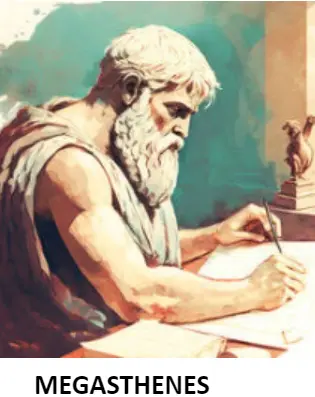![]() May 16, 2024
May 16, 2024
![]() 10702
10702
![]() 0
0
Megasthenes, a Greek diplomat and historian, provided valuable insights into ancient India during Chandragupta Maurya’s rule. Despite his book, the Indica, being lost, its essence has been pieced together from other ancient writings. Megasthenes is hailed as the “father of Indian history” for being the first to depict ancient India’s geography, society, and governance.
India is described in Megasthenes’ Indica as follows:

| Must Read | |
| Current Affairs | Editorial Analysis |
| Upsc Notes | Upsc Blogs |
| NCERT Notes | Free Main Answer Writing |
Conclusion
Through Megasthenes’ writings, we glimpse into ancient India’s diverse geography, rich society, and structured governance. His observations on India’s rivers, races, and governance systems offer invaluable historical knowledge. Megasthenes’ work remains a cornerstone in understanding the early civilizations of the Indian subcontinent.
Megasthenes
<div class="new-fform">
</div>

Latest Comments